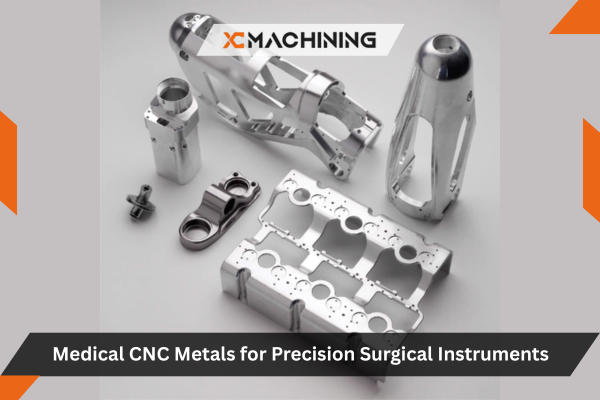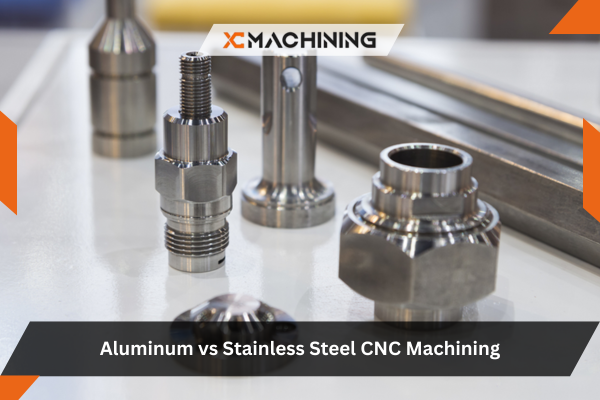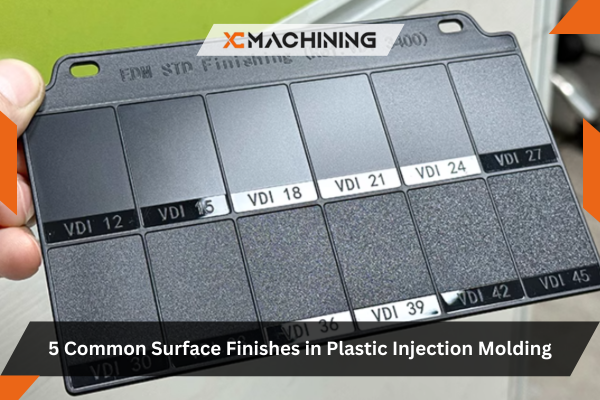In the world of engineering plastics, few materials have earned the reputation and longevity of Delrin plastic. Since DuPont introduced this remarkable material in the 1950s, it has become a workhorse across countless industries, from automotive manufacturing to medical devices. Engineers and designers consistently turn to Delrin when applications demand the strength of metal combined with the versatility of plastic. This comprehensive guide explores what makes Delrin plastic special, its diverse applications, processing methods, and practical considerations for anyone specifying or working with this exceptional material.
Table of Contents
What Is Delrin Plastic?
Delrin plastic is DuPont’s brand name for acetal homopolymer, also known chemically as polyoxymethylene (POM). To answer the common question “is Delrin a plastic?”—yes, it’s a high-performance engineering thermoplastic distinguished by its exceptional mechanical properties, dimensional stability, and low friction characteristics.
The material’s molecular structure consists of repeating formaldehyde units linked in long, highly ordered chains. This regular crystalline structure gives Delrin its outstanding stiffness, strength, and resistance to creep (deformation under sustained load). The material typically achieves 75% crystallinity, contributing to its metal-like performance characteristics that set it apart from commodity plastics.
Key Properties That Define Delrin Plastic
Understanding Delrin’s property profile helps explain its widespread adoption:
Exceptional stiffness and strength: Delrin exhibits tensile strength around 70 MPa and flexural modulus of approximately 2,800 MPa—among the highest of any unfilled thermoplastic. This rigidity approaches some metals while maintaining plastic’s weight advantage.
Outstanding dimensional stability: Low moisture absorption (less than 0.25%) and minimal thermal expansion ensure parts maintain precise dimensions across varying environmental conditions. This stability makes Delrin ideal for precision mechanical components.
Superior wear resistance and low friction: The material’s coefficient of friction against steel is approximately 0.20, rivaling some lubricated metals. Self-lubricating properties reduce wear in moving parts and often eliminate the need for external lubrication.
Excellent fatigue resistance: Delrin withstands millions of flex cycles without failure, making it perfect for snap-fit assemblies, living hinges, and components experiencing repeated stress.
Good chemical resistance: Resists most solvents, fuels, and neutral chemicals, though strong acids and bases can attack it. This resistance suits automotive fuel system applications and industrial equipment exposed to chemicals.
Temperature performance: Continuous use temperature reaches 90°C (194°F), with brief exposure tolerance to 140°C. While not the highest-temperature plastic available, this range covers most mechanical applications adequately.
Major Delrin Plastic Applications Across Industries
The unique combination of properties makes Delrin plastic suitable for remarkably diverse applications across numerous sectors.
Automotive Industry Applications
The automotive sector represents one of Delrin’s largest application areas, utilizing its strength, chemical resistance, and dimensional stability in critical components:
Fuel system components: Delrin’s excellent resistance to gasoline, diesel, and alternative fuels makes it ideal for fuel pumps, fuel sender units, fuel rails, and vapor management components. The material maintains dimensional stability despite constant fuel exposure and temperature cycling.
Door lock mechanisms and window regulators: The combination of strength, low friction, and wear resistance enables smooth operation over hundreds of thousands of cycles. Delrin gears and sliding components operate quietly without lubrication throughout the vehicle’s lifetime.
Seat belt components: Buckles, adjusters, and retractor mechanisms utilize Delrin’s high strength and impact resistance to ensure passenger safety while maintaining light weight.
Interior trim and adjustment mechanisms: Seat adjustment gears, ventilation louvers, cup holder mechanisms, and mirror adjusters benefit from Delrin’s smooth operation and dimensional precision.
Under-hood applications: Battery hold-down components, fluid reservoirs, and electrical connector housings withstand the harsh under-hood environment thanks to Delrin’s temperature and chemical resistance.
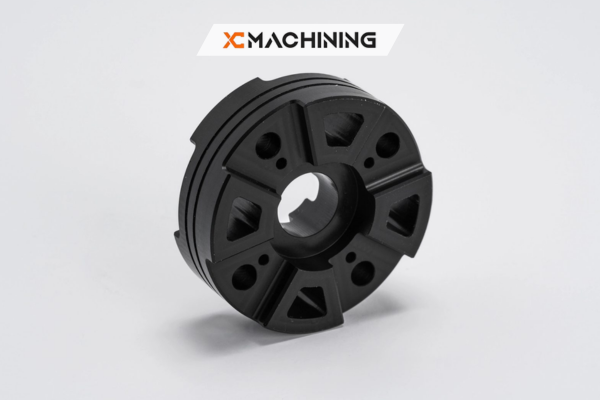
Industrial and Manufacturing Equipment
Delrin plastic serves as a metal replacement in numerous industrial applications where traditional materials face limitations:
Conveyor components: Chain links, sprockets, rollers, and wear strips made from Delrin operate quietly while reducing weight and eliminating rust concerns. The self-lubricating properties minimize maintenance requirements in food processing and packaging lines.
Pump and valve components: Impellers, valve seats, sealing components, and bearing surfaces utilize Delrin’s chemical resistance and low friction. The material works particularly well in water pumps, chemical metering pumps, and pneumatic valves.
Gears and bearings: High-load gears benefit from Delrin’s combination of strength and wear resistance. Bushings and bearing surfaces operate with minimal friction, often outperforming lubricated metal alternatives in certain applications.
Fixtures and tooling: Manufacturing jigs, fixtures, and assembly tooling made from Delrin plastic sheet offer excellent dimensional stability while being easily machined to tight tolerances. The material won’t mar expensive workpieces and provides electrical insulation where needed.
Consumer Products and Appliances
Consumer goods manufacturers appreciate Delrin’s aesthetic possibilities combined with functional excellence:
Zipper teeth: The smooth surface finish and wear resistance make Delrin perfect for high-quality zippers in outdoor gear, luggage, and apparel. The material resists corrosion unlike metal zippers while maintaining smooth operation.
Aerosol valves and dispensers: Precise molding capability and chemical resistance suit the demanding requirements of aerosol actuators, pump dispensers, and trigger sprayers. Delrin maintains consistent spray patterns over millions of actuations.
Appliance components: Washing machine agitators, dishwasher spray arms, coffee maker components, and food processor gears rely on Delrin’s durability and food-contact safety (FDA compliant grades available).
Sporting goods: Archery components, fishing reel gears, ski bindings, and bicycle derailleur parts benefit from Delrin’s strength-to-weight ratio and weather resistance.
Musical instruments: Guitar picks, woodwind instrument keys, and mechanical components in electronic instruments utilize Delrin’s acoustic properties and dimensional stability.
Medical and Healthcare Applications
The medical device industry values Delrin plastic for specific applications requiring its unique property combination:
Surgical instruments: Handles, ratcheting mechanisms, and non-critical instrument components use Delrin’s strength and smooth operation. However, sterilization method compatibility must be carefully considered—Delrin tolerates gamma radiation but has limited autoclave resistance.
Insulin pen components: Dose setting mechanisms and injection triggers demand the precision and reliability that Delrin provides over thousands of injections.
Respiratory devices: Inhaler components, ventilator valves, and oxygen concentrator parts utilize Delrin’s dimensional stability and low friction for reliable operation.
Diagnostic equipment: Analyzer components, sample handling mechanisms, and fluid control systems benefit from Delrin’s chemical resistance and precision.
Electronics and Electrical Applications
While not typically chosen for electrical insulation properties, Delrin serves specific electronic equipment needs:
Connector housings and switch components: Where mechanical strength matters more than electrical performance, Delrin provides robust housings and actuating mechanisms.
Cable management: Zip tie heads, cable organizers, and routing clips made from Delrin offer durability and smooth edges that won’t damage cable insulation.
Computer and office equipment: Printer gears and rollers, photocopier components, and keyboard mechanisms utilize Delrin’s quiet operation and long-term reliability.
Delrin Plastic Processing Methods
Understanding how Delrin plastic is processed helps designers optimize part design and select appropriate material forms.
Delrin Plastic Injection Molding
Injection molding represents the most common processing method for Delrin, producing complex parts with excellent dimensional accuracy and surface finish.
Design considerations for injection molding:
- Maintain uniform wall thickness (2-4mm typical) to prevent sink marks and warpage
- Draft angles of 0.5-1° per side facilitate part ejection
- Radius sharp corners (minimum 0.5mm) to reduce stress concentrations
- Gate location affects molecular orientation and resulting strength
- Delrin’s low shrinkage (approximately 2%) enables tight tolerances
Delrin plastic injection molding produces everything from tiny watch gears to large automotive components, with cycle times significantly faster than many engineering plastics due to rapid crystallization.
Machining Delrin Plastic Sheet
Delrin plastic sheet is readily available in various thicknesses for machining operations. The material machines beautifully, producing excellent surface finishes without special tooling.
Machining characteristics:
Turning and milling: Standard carbide or high-speed steel tools work well. Sharp tools and moderate speeds prevent heat buildup. The material produces short chips rather than long stringy swarf.
Drilling: Standard twist drills create clean holes. Peck drilling helps evacuate chips in deep holes. No pilot holes needed for threading.
Threading: Delrin accepts both cut and formed threads excellently. The material’s rigidity ensures threads maintain precise dimensions.
Sawing: Standard woodworking or metal-cutting saws cut Delrin cleanly. Fine-tooth blades minimize edge chipping.
Where to buy Delrin plastic sheet depends on your location and quantity requirements. Industrial plastic suppliers stock standard sheet sizes (typically 4′ x 8′ sheets) in thicknesses from 1/8″ to 3″ or metric equivalents. Searching “Delrin plastic near me” typically reveals local distributors who can provide same-day or next-day availability for prototyping and small production runs.
Extrusion and Rod/Bar Production
While less common than injection molding, Delrin can be extruded into rods, bars, and tubes used for subsequent machining. These stock shapes serve prototype development and low-volume production where injection molding tooling costs aren’t justified.
Delrin vs. Alternative Materials
Material selection often involves comparing Delrin against alternatives with overlapping capabilities.
Delrin vs. Acetal Copolymer (Celcon)
Acetal copolymer represents Delrin’s closest competitor—both are polyoxymethylene (POM) materials with similar properties:
Delrin advantages: Slightly higher stiffness and strength, better fatigue resistance, superior creep resistance, higher continuous use temperature.
Copolymer advantages: Better long-term chemical resistance (especially to hot water and alkaline solutions), improved thermal stability, better centerline porosity resistance in thick sections.
For most mechanical applications, performance differences are subtle. Chemical exposure and manufacturing considerations often drive the choice.
Delrin vs. Nylon (Polyamide)
Nylon offers different trade-offs compared to Delrin plastic:
Delrin advantages: Superior dimensional stability (much lower moisture absorption), better creep resistance, lower friction, easier machining, tighter tolerances.
Nylon advantages: Higher impact strength, better abrasion resistance, higher continuous use temperature, lower cost, better chemical resistance to some solvents.
Applications requiring precision and dimensional stability favor Delrin, while those prioritizing toughness and temperature resistance may prefer nylon.
Delrin vs. UHMW Polyethylene
Ultra-high molecular weight polyethylene provides extreme wear resistance:
Delrin advantages: Much higher stiffness and strength, better dimensional stability, easier machining to tight tolerances, better high-temperature performance.
UHMW advantages: Superior abrasion resistance, excellent impact strength even at cryogenic temperatures, lower friction coefficient, complete chemical inertness.
Structural components and precision parts favor Delrin, while bearing surfaces and extreme wear applications often choose UHMW.
Limitations and Considerations
Despite its excellent properties, Delrin plastic has limitations that influence application suitability:
Limited acid/base resistance: Strong acids and bases attack Delrin, limiting use in chemical processing involving these substances. Prolonged exposure to hot water above 60°C can also cause degradation.
UV sensitivity: Outdoor applications require UV-stabilized grades or protective coatings, as standard Delrin degrades when exposed to sunlight over extended periods.
Flammability: Delrin burns readily and doesn’t meet stringent flammability requirements for electrical applications without special grades.
Sterilization constraints: While gamma radiation sterilization works well, repeated autoclave sterilization degrades Delrin. Medical applications requiring frequent autoclaving need alternative materials.
Joining challenges: Delrin’s chemical resistance makes solvent welding impossible. Ultrasonic welding works but requires careful parameter development. Mechanical fastening or adhesive bonding (with appropriate surface preparation) provide more reliable joining methods.
Shrinkage and warpage: Although shrinkage is relatively low, complex geometries require careful mold design and process optimization to prevent warpage. Thick sections may exhibit centerline porosity.
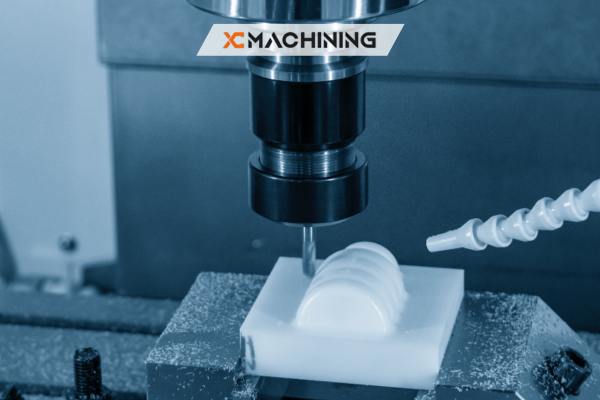
Sourcing and Cost Considerations
Material cost and availability influence material selection, particularly for cost-sensitive applications.
Delrin pricing typically ranges from $8-15 per kilogram for standard injection molding grades, with specialty formulations (glass-filled, UV-stabilized, FDA-compliant) commanding premiums of 20-50%. This positions Delrin as a mid-range engineering plastic more expensive than commodity plastics like polypropylene but less costly than high-performance materials like PEEK.
For those wondering where to buy Delrin plastic for prototyping or production:
Injection molding resin: Material distributors and resin suppliers stock standard grades with lead times typically 2-4 weeks for full truckload quantities. Smaller quantities may be available from local distributors with shorter lead times.
Sheet, rod, and bar stock: Industrial plastic suppliers maintain inventory of machining stock in common sizes. Online searches for “Delrin plastic near me” identify local suppliers offering immediate availability.
Custom formulations: Working with compounders enables development of specialized grades with enhanced UV resistance, specific colors, or modified lubricity for unique application requirements.
Best Practices for Working with Delrin Plastic
Maximizing success with Delrin requires attention to material handling and design practices:
Material drying: Always dry Delrin thoroughly before processing. Even small amounts of moisture cause degradation during melting, compromising mechanical properties and appearance.
Design for manufacturing: Follow injection molding design guidelines regarding wall thickness uniformity, draft angles, and corner radii to optimize part quality and minimize cycle time.
Material selection: Choose the appropriate Delrin grade for your application. Standard grades suit most applications, while glass-filled versions provide enhanced stiffness, and specialty grades address specific requirements.
Tolerance specification: Leverage Delrin’s excellent dimensional stability by specifying realistic tolerances. Typical achievable tolerances are ±0.1-0.2mm for small features, tightening with good process control.
Testing and validation: For critical applications, validate performance through appropriate testing—load testing, environmental exposure, fatigue testing, chemical compatibility to ensure long-term reliability.
Conclusion
Delrin plastic has earned its position as a premier engineering thermoplastic through decades of proven performance across diverse applications. Its unique combination of metal-like stiffness, excellent wear resistance, dimensional stability, and ease of processing makes it an outstanding choice for precision mechanical components, automotive parts, industrial equipment, and consumer products.
Understanding what Delrin plastic offers and equally important, its limitations enables engineers and designers to leverage its strengths appropriately. Whether you’re designing injection-molded automotive components, machining prototypes from Delrin plastic sheet, or specifying materials for industrial equipment, this versatile material deserves serious consideration wherever applications demand the strength and precision of metal with the design flexibility and economy of plastic.
As manufacturing continues evolving toward lighter, more efficient products, Delrin plastic remains relevant by delivering reliable performance that balances technical excellence with practical considerations of cost and processability.
FAQs
Is Delrin safe for drinking-water parts?
Yes, NSF-certified grades serve in faucets and coffee spigots.
Can Delrin handle outdoor UV?
Add UV-stabilized grades or paint; raw Delrin chalks over time.
How does Delrin machine compared to aluminum?
It cuts like hardwood—no coolant needed, but use sharp tools to dodge fuzz.
What temperatures can Delrin withstand?
Continuous service up to ~90 °C, short peaks to 120 °C.
Is Delrin recyclable?
Absolutely—many shops grind clean runners and re-blend up to 25 % without losing strength.


